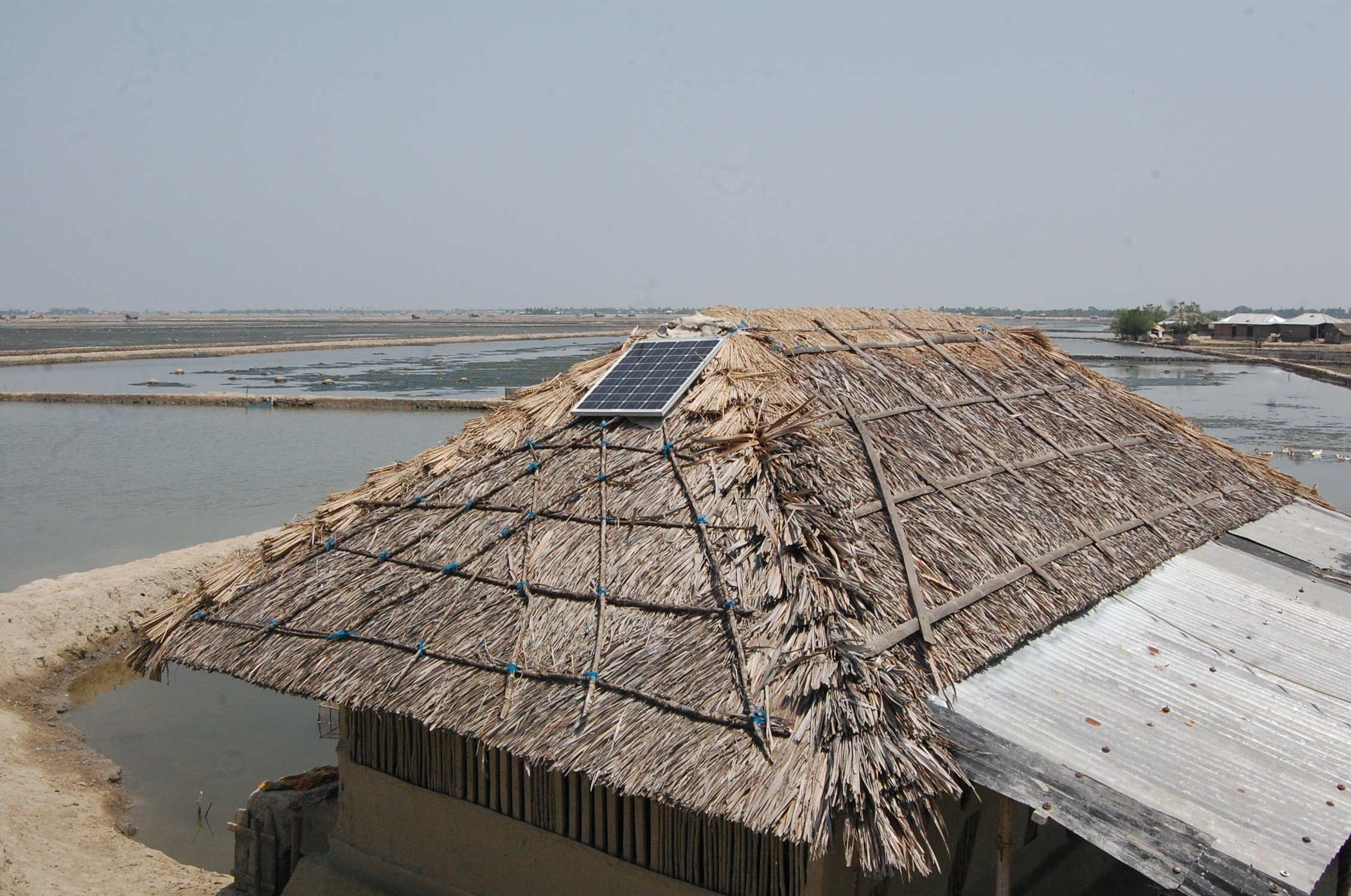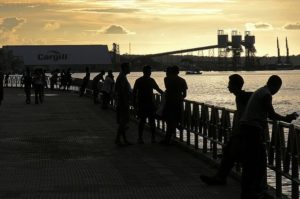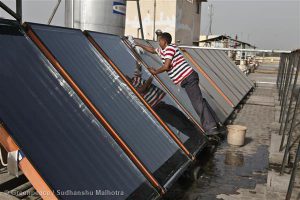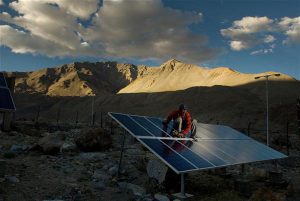In many remote areas in Bangladesh, where there are still no roads or electricity poles, a solar panel device can be found shining on the roof of a bamboo and straw hut. They are the beacons of the country’s push for renewable energy, the solar home system (SHS) that is gradually replacing kerosene lamps and bringing light to 65,000 homes in rural areas every month.
An estimated 3.5 million houses now have access to energy through solar panels set up by the government or by private companies. Besides its villages, the Bangladesh has also installed solar devices in parts of its capital Dhaka and five other cities to power street lights and agricultural irrigation pumps, though on a small scale.
The government formulated a renewable energy policy in 2008 to promote renewable energy sources, especially solar power. This sets a target to generate 5% of energy from renewable sources by 2015 and 10% by 2020 (up from the current 2.5%), but the country is still far from achieving its goals.
With the government dependent on imported equipment, costs are a major barrier. The smallest solar home system that can power two 2.5 watt LED lights costs about 8,000 takas (about $105), too much for a poor family. The government is promoting solar by offering soft credit through instalments.
Despite efforts by both the public and private sector, renewable energy counts for just 150 MW as the government continues to rely on coal and gas-fired power generation. It has recently initiated a massive 9,000 MW coal and gas-fired power generation schemes to achieve its power demands.
Are the numbers stacked against renewable energy, a cleaner, healthier energy option, experts wonder.
The numbers challenge
At present, the country’s power generation capacity is 10,341 MW (however, actual peak generation stands at only 7,359 MW). Of total generated power, 65% comes from domestic natural gas, 25% from imported liquid fuel, 2.5% from coal, 1.39% from hydropower and the remaining 5% from renewable energy and other imports.
With only 60% of households in Bangladesh connected to the grid, the government has set a target of ensuring electricity to all, as well as developing middle-income status by 2021, the 50th anniversary of the country’s independence.
For this the country needs to increase gross domestic production (GDP) growth to 10% from the current rate of 6%; and triple its energy generation by 2030.
Bangladesh will need to generate 20,000 MW by 2021 and 34,000 MW by 2030 to attain the desired rate of economic development, according to the 2010 Power System Master Plan.
The plan envisages 50% of power produced from coal, 25% from gas, 10% from oil and 15% from other sources, including nuclear, renewable energy and cross border imports.
Given all this, an official at the Bangladesh Power Development Board (BPDB) said the country has no option but to generate fuel-based electricity. “If we want to produce that much electricity using solar panels we may need to cover the whole of Bangladesh with solar panels,” he said.
When asked why the government wasn’t doing more to promote clean energy, the official said the government is planning to explore the potential of developing wind power along Bangladesh’s 700 km long coast. It has already signed a contract with a consortium including a Danish among the partners. However, this is only a 60 MW wind power project.
Focus on coal
Not surprisingly, the main focus continues to be on non-renewable sources. In February this year, the Bangladesh government approved a plan to convert Maheshkhali island in the Bay of Bengal into the country’s largest energy hub.
The government has already appointed consultants to conduct feasibility studies and initial plans for five large coal-powered plants totaling around 6,000 MW and one 3,000 MW power plant to be fired by imported liquefied natural gas (LNG) there.
The first of the five 1,200 MW coal-fired ultra super critical power plants is to be built jointly by BPDB and Chinese company CHDHK.
One of the projects – the Matarbari project in Chittagong – being built with a soft loan from Japan also includes the development of a deep-sea port dedicated to handling imported coal.
Bangladesh had earlier adopted three priority projects– the 2,000 MW Rooppur Nuclear Power Plant, the 1,320 MW Rampal Imported Coal Based Power Plant and the LNG Terminal jointly with India and Russia respectively.
As it stands, almost 50% of total future power will come from imported fuel, especially coal, as domestic sources are yet to be explored. Coal sourcing and finances are major challenges, along with issues such as import infrastructure and transportation that are not yet resolved.
According to energy expert Mohammad Tamim, professor at the Bangladesh University of Engineering and Technology (BUET), the country is on the right path. Apart from finances, he said, the current energy problem originates from the lack of primary energy supply.
In his view, the country has a very limited hydropower potential with a potential of just 230 MW and solar power is the most expensive power solution at the moment.
“Imported LNG for base load is not feasible. The option for local gas is also not viable at this point of time. That leaves only coal and nuclear as options. The government is going in the right direction in terms of fuel and technology preference,” Tamim said in an article published in the journal Power and Energy.
No long-term vision
But there are those who disagree vehemently with this view. Professor Anu Muhammed, secretary general of the Committee to Protect Oil, Gas, Mineral Resources, Power and Ports, believes the government should promote renewable rather than hazardous coal based and nuclear energy which will cause more environmental problems in the future.
“Without having any long-term vision, the government only implemented some donor funded projects in the renewable sector. The government should have gone for producing solar panels of its own rather than importing them, which would reduce costs,” he said.
“If the government wants to go for electricity generation based on imported primary resources, it should have gone for gas fire based electricity which would be a lot cheaper and less hazardous,” he said.









